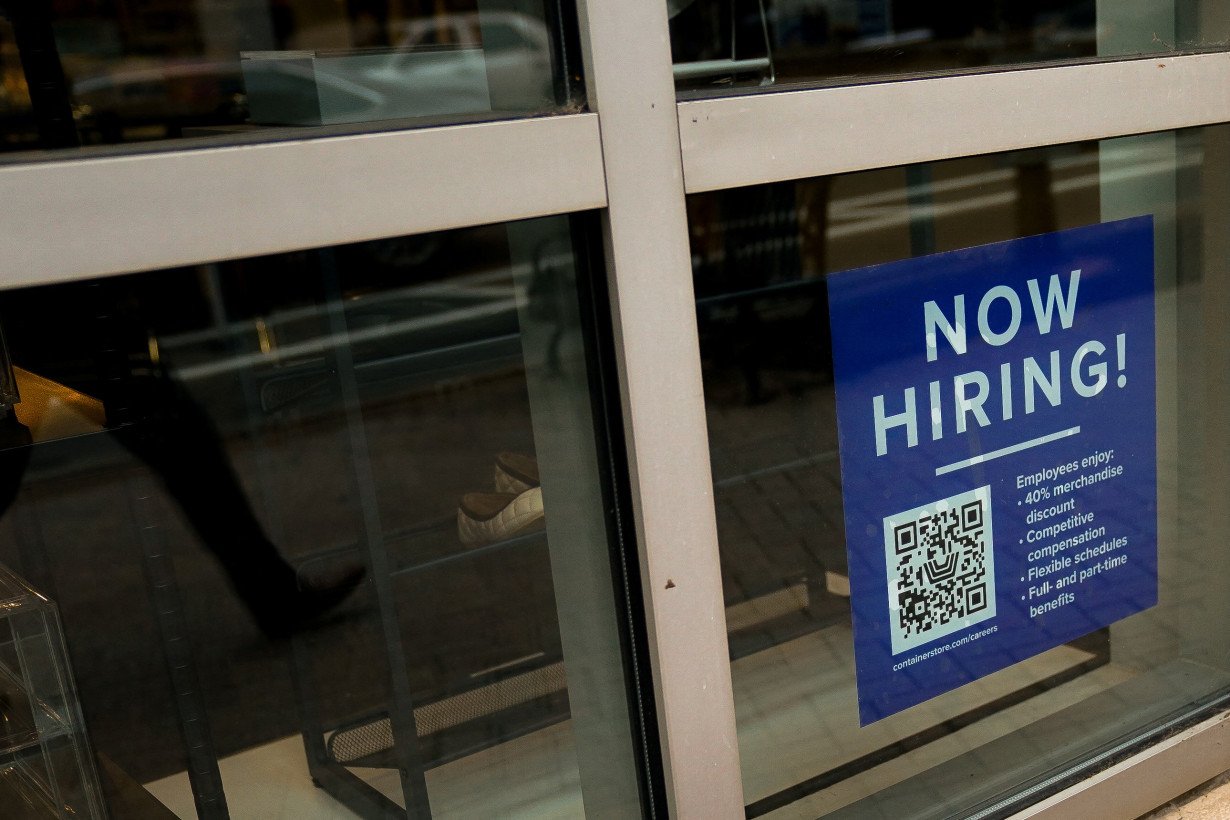By Lucia Mutikani
WASHINGTON (Reuters) - U.S. job openings unexpectedly increased in August amid a surge in demand for workers in the professional and business services sector, pointing to a still-tight labor market that could compel the Federal Reserve to raise interest rates next month.
The jump reported by the Labor Department in its Job Openings and Labor Turnover Survey, or JOLTS report, on Tuesday snapped three straight monthly declines in job openings. Employers were also holding on to their workers in August.
Nevertheless, the labor market continues to steadily move toward an environment where demand is in balance with supply. There were 1.51 job openings for every unemployed person in August, marginally down from 1.53 in July.
Unemployment increased in August. The quits rate was unchanged at a 1-1/2-year low. The Fed held rates steady last month but signaled a hike by the end of this year.
"The reversal reinforces the case for a November Fed hike," said Jonathan Millar, a senior economist at Barclays in New York.
Job openings, a measure of labor demand, were up 690,000 to 9.610 million on the last day of August. That was the most in just over two years. Data for July was revised higher to show 8.920 million job openings instead of the previously reported 8.827 million. Economists polled by Reuters had forecast 8.800 million job openings in August.
Small businesses, with less than 10 employees, accounted for the bulk of the rise in job openings. Medium-sized businesses reported sizeable increases, but the rise for large corporations was modest. There were an additional 509,000 open positions in the professional and business services. Some economists viewed this increase as an anomaly given that the sector accounted for about 16% of total employment and speculated that a low response rate could be biasing the numbers higher.
Vacancies increased by 96,000 in the finance and insurance sector. State and local government education had 76,000 more openings. Unfilled positions increased by 59,000 in the nondurable goods manufacturing industry, and the federal government had an additional 31,000 openings.
Regionally, there were fewer job opportunities in the South and Midwest, while the Northeast and West reported a rise in openings. The job openings rate increased to 5.8% from 5.4% in July. Hiring increased by only 35,000 to 5.857 million, indicating that worker shortages was a major constraint.
Stocks on Wall Street were trading lower. The dollar rose against a basket of currencies. U.S. Treasury prices fell, pushing yields on the benchmark 10-year and 30-year notes to 16-year highs. Tight labor market conditions combined with rising oil prices and expanding Treasury supply to boost bond yields.
LAYOFFS LOW
Financial markets briefly dialed down expectations that the U.S. central bank would keep rates unchanged at its Oct. 31-Nov. 1 policy meeting, according to CME Group's FedWatch tool. The Fed has raised its policy rate by 525 basis points to the current 5.25%-5.50% range since March to quell demand.
Attention now shifts to September's employment report, which is scheduled for release on Friday.
"Friday's payroll data should help clarify if the labor market is as strong as the JOLTS report implies, because at this stage of the Fed's 'last mile' to untangle the remaining 'sticky' inflation, a stronger than expected report will be the last thing the Fed wants to see, not to mention financial markets," said Quincy Krosby, chief global strategist at LPL Financial in Charlotte, North Carolina.
The JOLTS report showed layoffs dipping 1,000 to 1.680 million, keeping the layoffs rate at 1.1%. Layoffs and discharges decreased in state and local government, excluding education, but rose in state and local government education.
Quits rose 19,000 to 3.638 million, ending two consecutive months of decreases. The quits rate, viewed as a measure of labor market confidence, was unchanged at 2.3%. Economists said that data bodes well for keeping wage inflation contained.
"This suggests that workers are finding fewer opportunities at other firms, an early sign of cooling within the labor market," said Ben Ayers, senior economist at Nationwide in Columbus, Ohio.
Resignations were led by the accommodation and food services sector, where quits rose 88,000.
There were also notable increases in finance and insurance, state and local government, excluding education, as well as in arts, entertainment and recreation, which was probably related to labor unrest in Hollywood. Resignations declined in the information industry.
(Reporting by Lucia Mutikani; Editing by Andrea Ricci, Paul Simao and Jonathan Oatis)

 UK inflation unexpectedly eases in December, which could reduce pressure in bond markets
UK inflation unexpectedly eases in December, which could reduce pressure in bond markets
 Body count from South African mine siege rises to 60
Body count from South African mine siege rises to 60
 US importers rush in goods from China as Trump tariff threat looms
US importers rush in goods from China as Trump tariff threat looms
 Question on ASEAN stumped Hegseth at Senate hearing. What is it and why is it important?
Question on ASEAN stumped Hegseth at Senate hearing. What is it and why is it important?
 Novak Djokovic breaks a tie with Roger Federer for the most Grand Slam matches in tennis history
Novak Djokovic breaks a tie with Roger Federer for the most Grand Slam matches in tennis history
 China's RedNote: what you need to know about the app TikTok users are flocking to
China's RedNote: what you need to know about the app TikTok users are flocking to
 British author Neil Gaiman denies ever engaging in non-consensual sex as more accusers come forward
British author Neil Gaiman denies ever engaging in non-consensual sex as more accusers come forward








